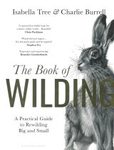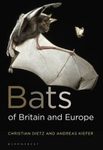![RSPB Handbook of the Seashore RSPB Handbook of the Seashore]()
Click to have a closer look
About this book
Customer reviews
Biography
Related titles
About this book
How often have you visited the seashore and wished you knew more about the diverse and alien wildlife found on the UK's coastline?
There are incredible stories to discover about our coastal species so if the tantalising glimpses you've caught of this semi-aquatic environment between the tides has left you curious to learn more the RSPB Handbook of the Seashore is for you.
It will help you to easily identify and learn about the life cycles and anatomy of the species you discover, and features useful sections on the tidal cycle, how to read tide tables, where to look, conservation and climate change concerns, and who to call should you come across something unexpected on your next beach visit.
Featuring over 200 species accounts – each with a photo, full description, and details of distribution and zonation – this brand new guide is written throughout in engaging text suitable for families, students and anyone who loves to visit the seashore.
Customer Reviews
Biography
Maya Plass is an experienced marine ecologist committed to sharing her love and knowledge of our aquatic world. Maya has developed projects in the UK and abroad to encourage communities to protect our seas and oceans and her passion for the sea has led her to engage with wider audiences through television presenting and now through her first book.
Field / Identification Guide
By: Maya Plass(Author)
240 pages, 400 colour photos, 50+ b/w illustrations
"We often spend time browsing the rock pools at our local beach, but since discovering this book we can now have a stab at properly identifying what we find, and this has added a new element of interest and excitement to our beach trips"
– Whattodowithkids.co.uk
"The perfect accompaniment for an afternoon's rock pooling. Introduce your grandchildren to a host of beachy mini-beasts this summer with a truly wholesome hobby."
– Yours
"Perfect for exploring rock pools with kids."
– Jane Lovatt, Prima
"An excellent introduction. This is an inspirational call to action, which has made me get out and start rockpooling again!"
– BBC Wildlife
"A superb book and thoroughly recommended for beachcombers of whatever age."
– Highland News Group
"stuffed full of information to help readers"
– Welsh Coastal Life
"as important an accompaniment on a trip to the coast as a bucket and spade."
– Scottish Sunday Express
"[...] This is a nicely produced and illustrated guide to the life of the beach and rock-pools. It covers a smaller range of shore life than the Collins field guide but, since the species chosen are those most easily recognised or likely to come to notice, it should be simpler to use. It also leaves more room for nature notes than in a more conventional guide, as well as tips on where to look and what to do, and how to time the tides. It covers the range of shore life from seaweeds and invertebrates to fish (but not birds), as well as objects that turn up on the strand such as sea beans and 'mermaid's tears' (bits of plastic sea-worn into beads). Illustrated throughout with colour photographs, this 'handbook' should find a ready market among the harassed parents of eager young holiday beachcombers and rock-poolers."
- Peter Marren, British Wildlife 25(1), October 2013



































